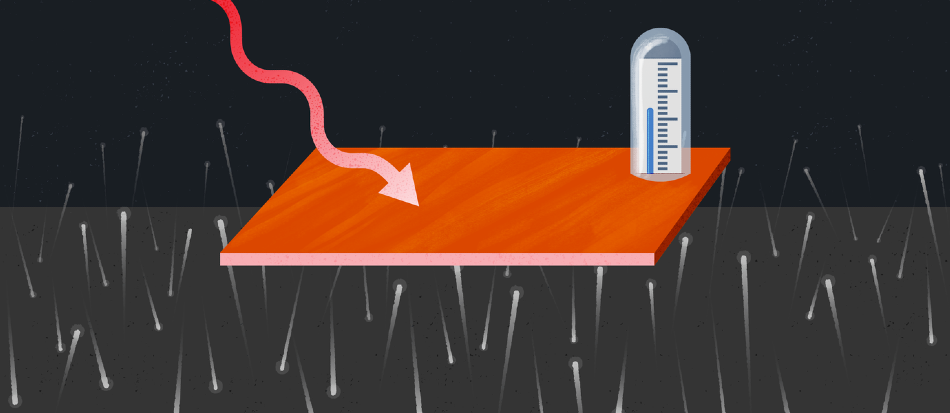Jan 20 2020
Quantum physics has been making its way from the laboratory into the everyday lives of humans. Although quantum computers have hit the headline for solving problems that cannot be solved by classical computers, there are certain technical difficulties in bringing quantum physics into the real world.
 Image Credit: Illustration by Safa Hovinen, Merkitys.
Image Credit: Illustration by Safa Hovinen, Merkitys.
A new study reported in Nature Communications by researchers from Aalto University and Lund University expects to offer a vital tool in this pursuit.
In quantum studies, one of the open questions is how thermodynamics and heat co-occur with quantum physics. This field of research, called “quantum thermodynamics”, is one of the areas on which Professor Jukka Pekola, the leader of the QTF Centre of Excellence of the Academy of Finland, has focused in his career.
This field has up to now been dominated by theory, and only now important experiments are starting to emerge.
Jukka Pekola, Professor and Leader, QTF Centre of Excellence, Academy of Finland
His research team has endeavored to develop quantum thermodynamic nano-devices that can find solutions to open questions experimentally.
Quantum states—such as the qubits powering quantum computers—interact with the world around them. Quantum thermodynamics deals exactly with these interactions. To measure these systems, extremely small changes in energy must be detected, which are difficult to pick out from background fluctuations, similar to using just a thermometer to try and find out whether a candle has been blown out in a room.
One more difficulty is that quantum states can vary while being measured, just because they have been measured. This would be similar to placing a thermometer in a cup of cold water and then making the water boil. The researchers had to enable a thermometer to quantify exceptionally small changes without affecting any of the quantum states they intend to measure.
Bayan Karimi, a doctoral student, is associated with QTF and Marie Curie training network QuESTech. The device she developed is a calorimeter that quantifies the heat within a system. A copper strip provided in the device for this purpose is nearly a thousand times thinner when compared to a strand of human hair.
Our detector absorbs radiation from the quantum states. It is expected to determine how much energy they have and how they interact with their surroundings. There is a theoretical limit to how accurate a calorimeter can be, and our device is now reaching that limit.
Bayan Karimi, Doctoral Student, QTF Centre of Excellence, Academy of Finland
The experimental part of the study was carried out at OtaNano national research infrastructure for micro, nano, and quantum technologies in Finland. Apart from Pekola and Karimi, the team includes Dr Fredrik Brange and professor Peter Samuelsson from Lund University. The study was reported in Nature Communications on January 17th, 2020.
Why ultra cold computers hold quantum secrets
Video Credit: Aalto University